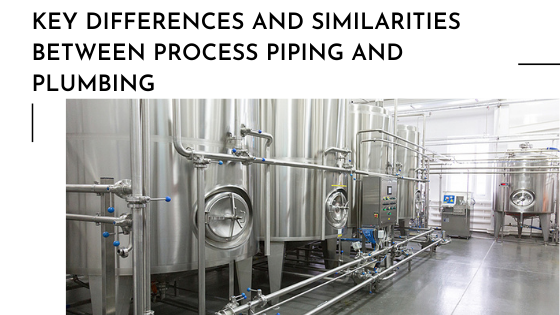Process support and building support
The building plumbing is done to handle typical systems like the sanitary sewer outflow and the water supplies. This type of plumbing is first designed and then constructed as per the building code of the area.
Process piping or process pipework services are done to support the functions within the construction. It answers the most rigorous material standard requirements due to the specific type of materials or conditions that might need to manage the systems, including foods products and hazardous chemicals.
Linked engineering standards
The national standards for piping divide the pipe systems into power systems, building systems, and process pipework services systems. The national standard set up by the government piping authority specifies the piping standards for training and certification requirements needed for personal working and the systems for process piping.
Different materials managed by process piping
Building plumbing manages the basic operational requirements of a building, like the water supply, wherein the water is completely safe and inert. However, process piping handles the chemicals, manufacturing, petrochemicals, as well as other reactive hazardous and specialised substances or food products such as pharmaceutical ingredients or milk. Therefore process piping is mainly done in manufacturing units, and major industries and power plants need specialised pipes to feed the systems.
System parameters
The process piping in North America is covered as per the ASME standards. These standards specify the fabrication, design, installation techniques, testing and system components for piping. These ASME standards help forecast a broad spectrum of uses and mention the parameters that are appropriate for every material that is being handled by them. The ASME standards also include around a dozen different piping materials utilised for a specific purpose, like non-metallic piping, which is commonly used in various semiconductor plants, and specialised metal alloy piping that is used in particular chemical plants.
Plumbing in a different spectrum
Plumbing in the building deals with typical materials or elements available in nature. Simultaneously, the process piping is conceptualised and designed for the hazardous or foreign chemical infrastructure that includes materials like hydrochloric acid or ammonia. This piping is a much more advanced technology in comparison to the basic plumbing requirements. Various things need to be considered while designing the process piping for a factory or industry, such as water temperature, taste, and other characteristics of different substances that are not used in a residential environment.
Moreover, these particular substances need to be fed or handled at a significant range of boiling and freezing points. For example, ammonia has a shallow boiling point compared to water when used below room temperature. Such materials need to be handled at the required pressure and temperature. Process piping is required to handle such elements at varying pressures and temperatures, which could not be dealt with in the standard building plumbing. Moreover, specific materials are used in construction. This ensures that the piping infrastructure follows strict precautions for different vibrations and temperatures.
Design engineers
Process piping requirements are far superior to the usual training provided to the plumbers. The risk and complexity of the projects depends on the designer of the process piping, who could be an engineer with advanced education and extensive experience. The design engineer needs to be well-versed with all the ASME standards required to design the process piping. The engineer should carry a proper certification of the ASME standards.
Like a mechanical engineer, the design engineer should also possess extensive experience in fittings, valves, pipes and various other components that make the process pipework services in Albury Wodonga. They should gain knowledge on how to conduct the conditions and evaluate the effect of different stresses on a system. All this knowledge is essential for the design engineer because any kind of defect or fault in the design of the project could result in severe consequences. Moreover, the design engineer should also consider natural disasters such as tsunamis, earthquakes, among others, while designing the piping system.
Plumbing and process piping are two very distinct aspects. Plumbing is linked with handling the piping work of the building, which the plumber could efficiently perform. Process piping runs the piping requirements of factories or industries. It needs expert professionals such as design engineers and mechanical engineers to design the piping as per strict safety standards and install them as per the company requirements.
If you want to find the best process pipework services in Albury Wodonga, you must visit RMR Engineering today.


